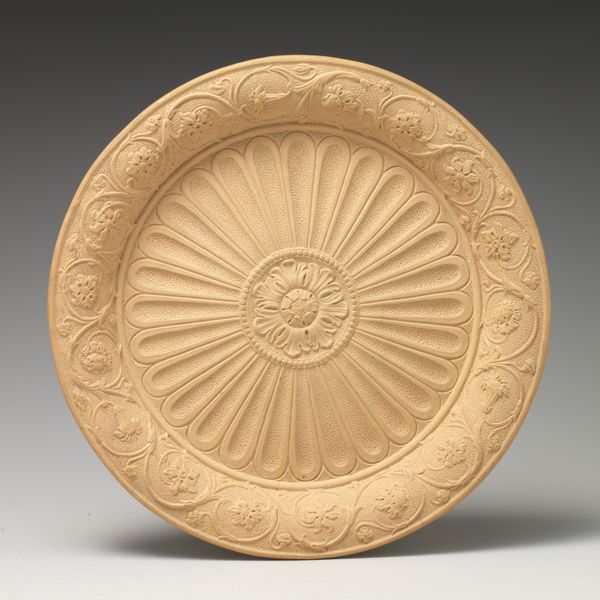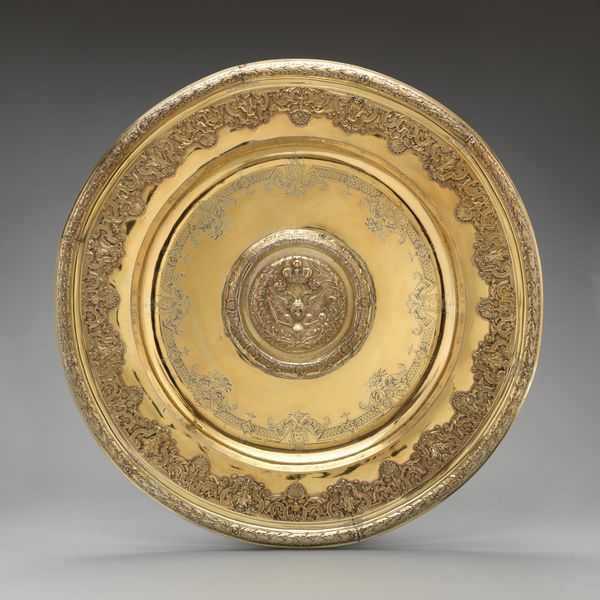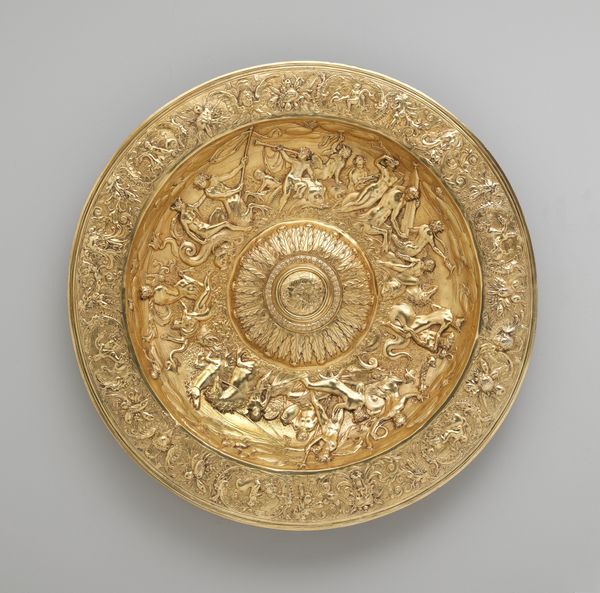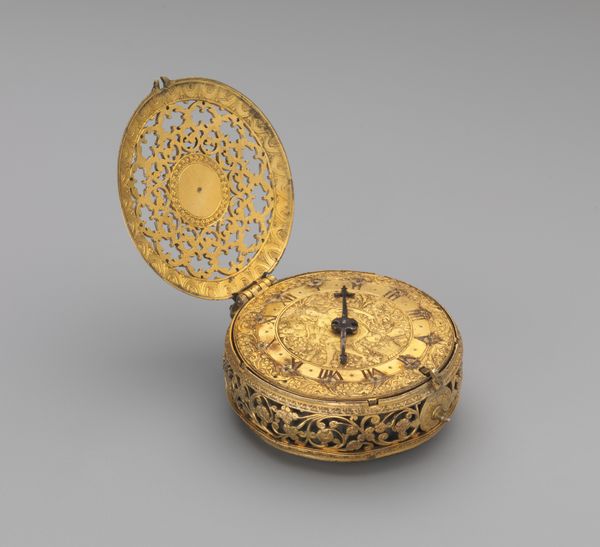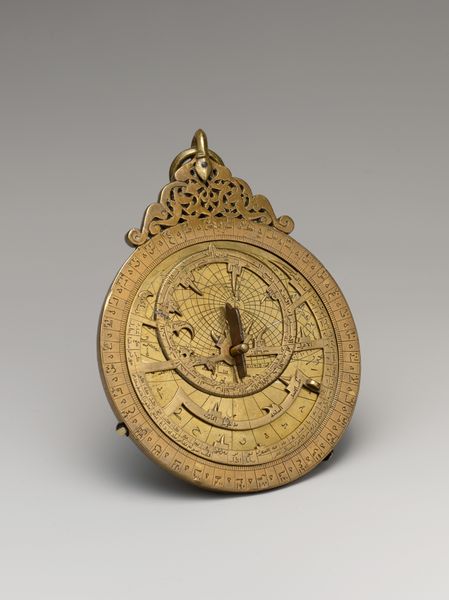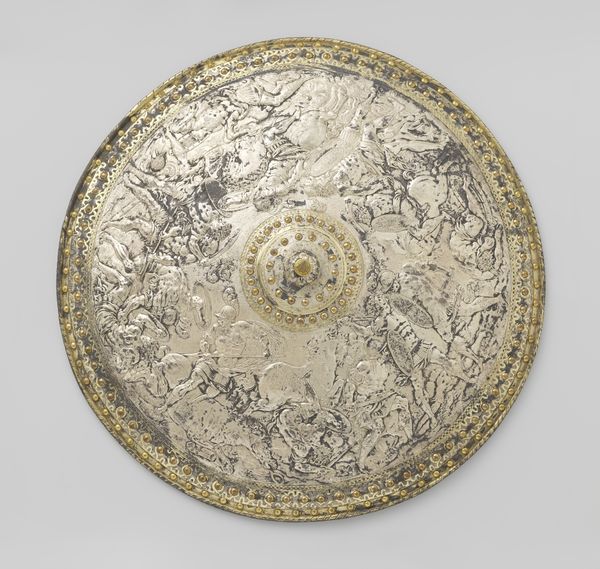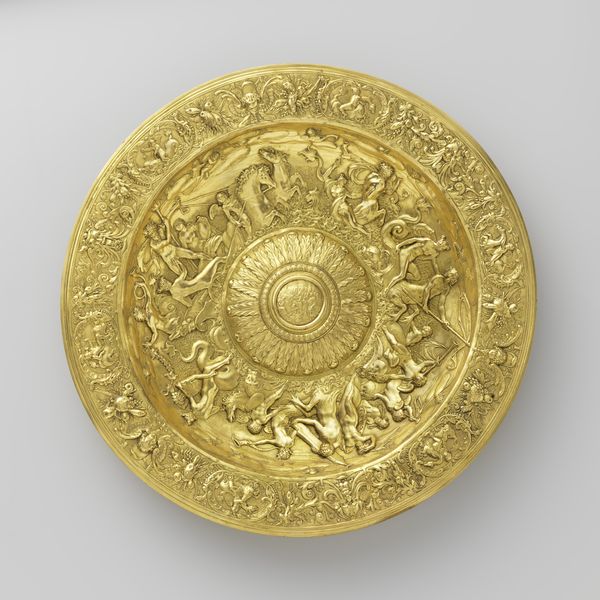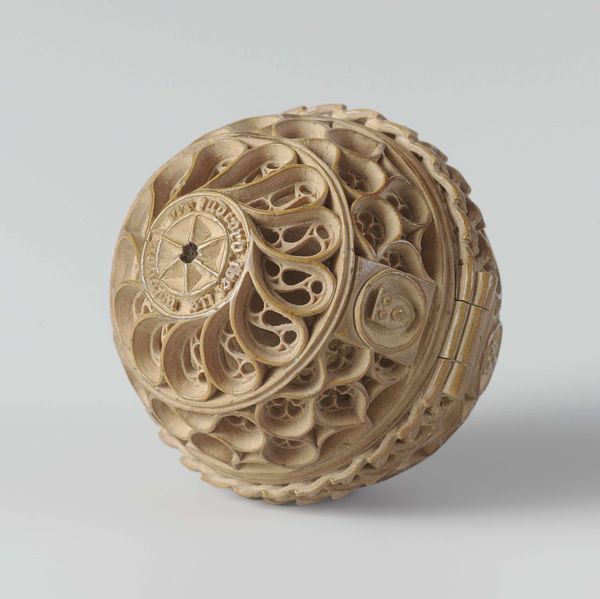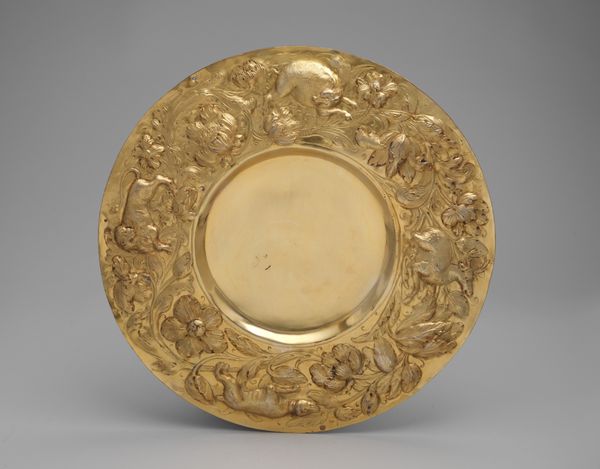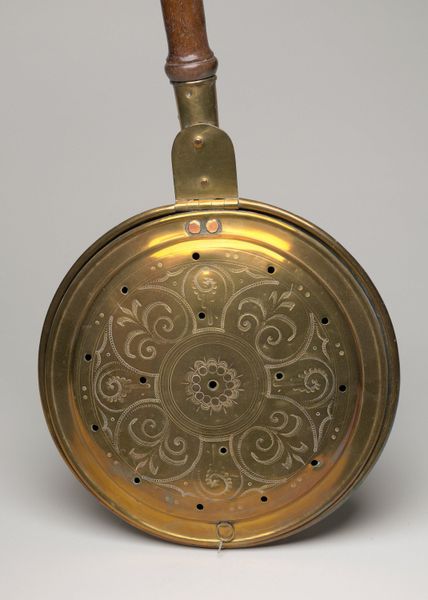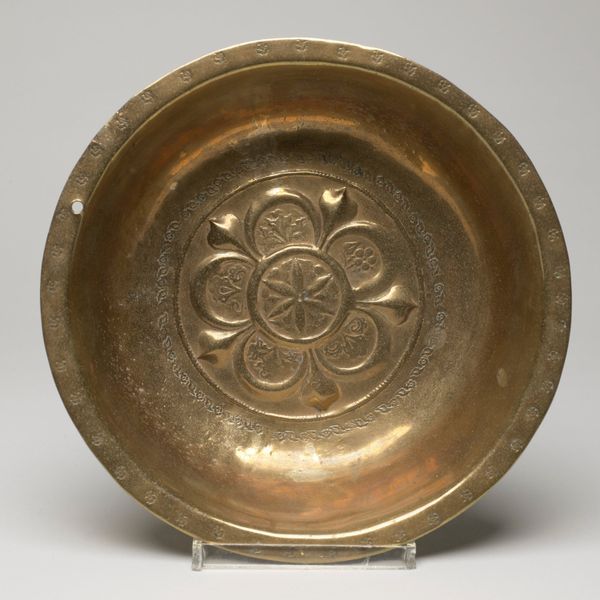
Dimensions: Diameter: 16 1/4 in. (41.3 cm)
Copyright: Public Domain
Curator: Here we have a nineteenth-century metal plate by Elkington & Co., currently residing at the Metropolitan Museum of Art. Editor: It's strikingly opulent! All that gold tone. The radiating lines create this hypnotic pull toward the center. It feels both classically grand and surprisingly modern, almost like a stylized sun. Curator: Indeed. Elkington & Co. were known for their expertise in electroplating, a technique that allowed them to mass-produce high-quality, decorative objects that mimicked precious metals. The influence of classicism and the Baroque style is clearly evident, which points to a cultural interest at the time. Editor: The perimeter really captures my attention—there appears to be script intermingled with foliate patterns. Do you know anything about what it says? Or about the iconographic intent of these swirling designs? Curator: It exemplifies a broader 19th-century fascination with antiquity, referencing forms that resonated with notions of grandeur and imperial power, frequently reproduced by museums worldwide. Such items demonstrated the rise of industrial production methods of luxury items, but their impact on social hierarchy is key. Were these objects strictly decorative or part of ritualistic activity? Editor: Given how that central motif is placed at the very heart, I'm wondering if it served some other function in its former life as a luxury good. I keep thinking of ceremonial settings, of altars gleaming with metalwork as sources of potent iconography. Curator: That’s interesting. I tend to see how decorative items of this period functioned as status markers among emerging social classes. Its historical relevance becomes clearer when we view art beyond intrinsic symbolic intentions. Editor: I see your point, particularly regarding the impact on consumption culture; still, considering the persistence of geometric imagery, perhaps there's more than mere status on display? Curator: Perhaps there are ways to find a balanced perspective on how culture operates through production. Editor: Always the ultimate objective, isn’t it? Looking at this piece has shown me that it exists between cultural history and aesthetic appreciation.
Comments
No comments
Be the first to comment and join the conversation on the ultimate creative platform.
